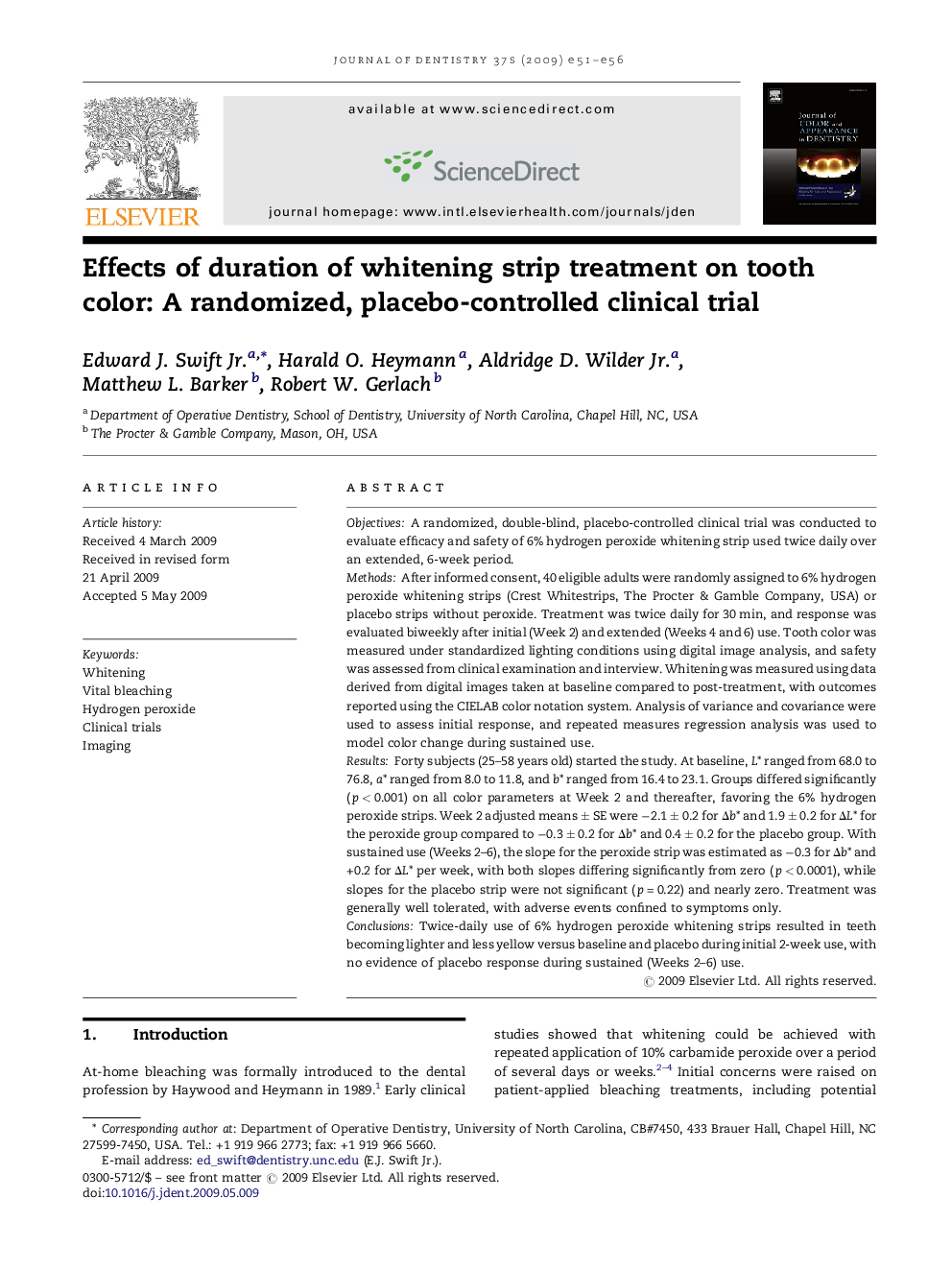| Article ID | Journal | Published Year | Pages | File Type |
|---|---|---|---|---|
| 3145831 | Journal of Dentistry | 2009 | 6 Pages |
ObjectivesA randomized, double-blind, placebo-controlled clinical trial was conducted to evaluate efficacy and safety of 6% hydrogen peroxide whitening strip used twice daily over an extended, 6-week period.MethodsAfter informed consent, 40 eligible adults were randomly assigned to 6% hydrogen peroxide whitening strips (Crest Whitestrips, The Procter & Gamble Company, USA) or placebo strips without peroxide. Treatment was twice daily for 30 min, and response was evaluated biweekly after initial (Week 2) and extended (Weeks 4 and 6) use. Tooth color was measured under standardized lighting conditions using digital image analysis, and safety was assessed from clinical examination and interview. Whitening was measured using data derived from digital images taken at baseline compared to post-treatment, with outcomes reported using the CIELAB color notation system. Analysis of variance and covariance were used to assess initial response, and repeated measures regression analysis was used to model color change during sustained use.ResultsForty subjects (25–58 years old) started the study. At baseline, L* ranged from 68.0 to 76.8, a* ranged from 8.0 to 11.8, and b* ranged from 16.4 to 23.1. Groups differed significantly (p < 0.001) on all color parameters at Week 2 and thereafter, favoring the 6% hydrogen peroxide strips. Week 2 adjusted means ± SE were −2.1 ± 0.2 for Δb* and 1.9 ± 0.2 for ΔL* for the peroxide group compared to −0.3 ± 0.2 for Δb* and 0.4 ± 0.2 for the placebo group. With sustained use (Weeks 2–6), the slope for the peroxide strip was estimated as −0.3 for Δb* and +0.2 for ΔL* per week, with both slopes differing significantly from zero (p < 0.0001), while slopes for the placebo strip were not significant (p = 0.22) and nearly zero. Treatment was generally well tolerated, with adverse events confined to symptoms only.ConclusionsTwice-daily use of 6% hydrogen peroxide whitening strips resulted in teeth becoming lighter and less yellow versus baseline and placebo during initial 2-week use, with no evidence of placebo response during sustained (Weeks 2–6) use.
